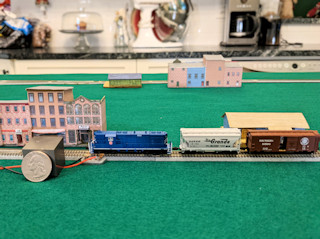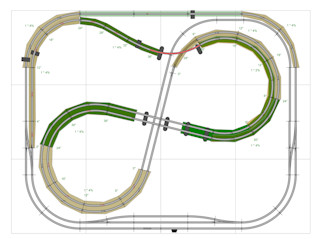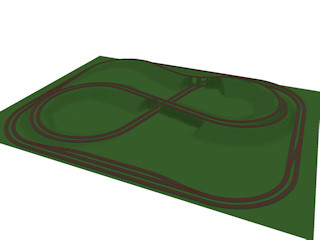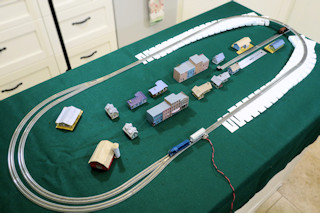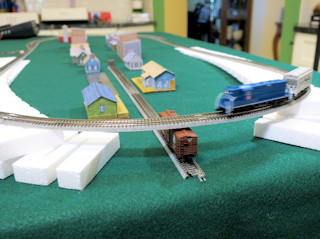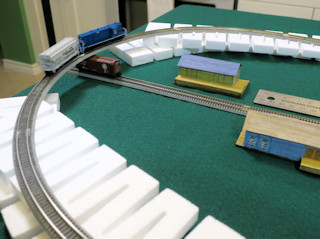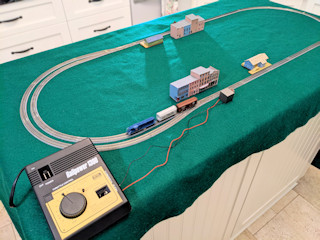
Recently I got interested in the very compact Z scale trains. Z scale is 1/220th the size of the real world. The engines are 50 to 75 mm long. A human being is about 8mm tall. N scale humans are about 11mm tall and HO scale humans are about 20mm tall. I did not really want to invest in a new train layout, but the compact and portable size of Z scale got me excited.
In the photo, you will see a small prototype layout set up on a kitchen island which measures about 4 feet (1.2 meters) by 2 1/2 feet (0.7 meters). As you can see, you can have an oval, switches and a branch line in a very small space.
The blue Mopac GP9 engine and two cars are from American Z Lines (AZL) trains. The track is from Micro Trains Line and consists of the expansion loop and a few stretches of 220mm straights. The power supply is an analog Model Rectifier Corp (MRC) transformer with throttle.
